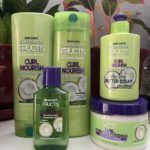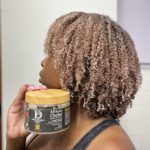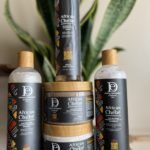How to Incorporate Them into Your Hair Care Routine
When it comes to styling routines for curly hair there are so many natural hair care routines out there. But the most talked-about and beneficial approaches are the LOC and LCO methods. Both methods are crucial to moisture retention and growth.
The method you should choose depends on your hair porosity. The LOC and LCO methods can hydrate, moisturize, and seal moisture into your curls. Not sure about your hair porosity level? Check out our post, Hair Porosity.
WHAT IS THE LOC METHOD?
The term LOC stands for liquid or leave-in conditioner, then oil, and then cream. Just to be clear it has nothing to do with locs or locking your hair. The LOC method illustrates steps in which you should apply your chosen products to your hair. If you have high porosity hair, you’ll find better results from the LOC method.
HOW TO DO THE LOC METHOD?
If you are ready to incorporate this method into your hair care routine, here are the steps:
- With freshly washed and detangled hair. See our post on Wash Day and Pre-poo
- Liquid – Apply water or a water-based product
- Oil – Seal in the moisture with help of oil like Jojoba oil
- Cream – Apply a cream such as Latte Define to moisturize your hair
WHAT IS THE LCO METHOD?
You may have already guessed it, the term LCO stands for liquid or leave-in conditioner, then cream, and then oil. Similar to the LOC method, this approach is all about keeping your strands moisturized for as long as possible. The concept behind the three steps method is to increase moisture retention and improve the health of your natural hair. If you have low porosity hair, the LCO method is a great match.
HOW TO DO THE LCO METHOD?
If you are ready to incorporate this method into your hair care routine. Here are the steps.
- With freshly washed and detangled hair. See our post on Wash Day and Pre-poo
- Liquid – Apply water or a water-based product
- Cream – Apply a cream such as SheaMoisture to moisturize your hair
- Oil – sealed in the moisture with help of oil like Organic Jamaican Castor oil
If you are unsure which method suits you best, you should experiment with both methods to see which one you prefer.
Thank you for taking the time to read! Leave your feedback on this article in the comment section below.
Thank you for visiting. Don't forget to subscribe!






